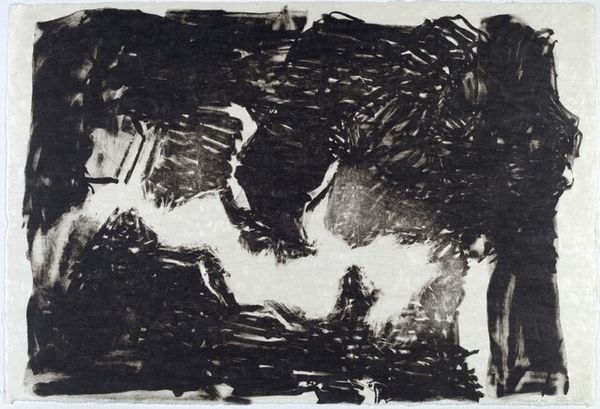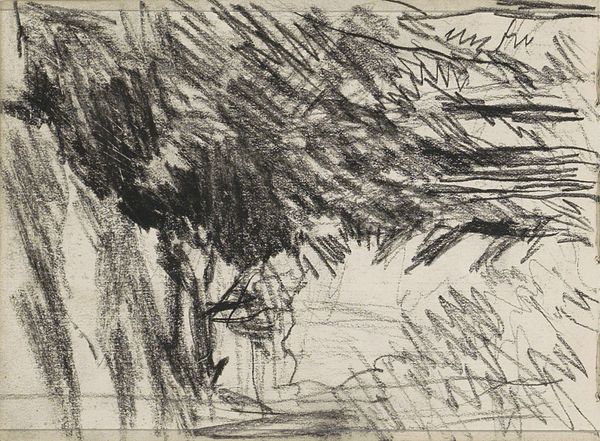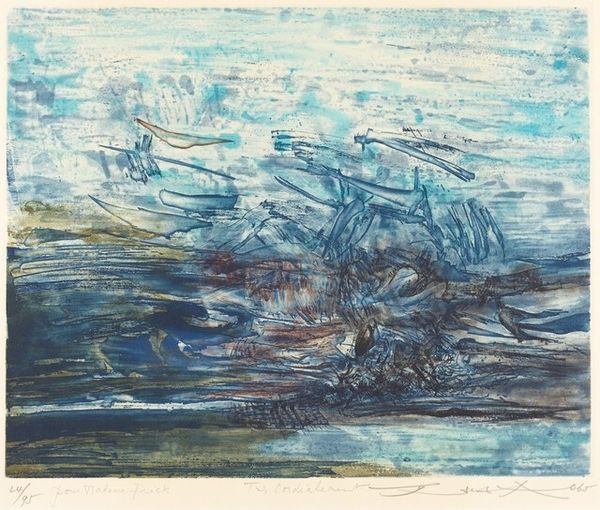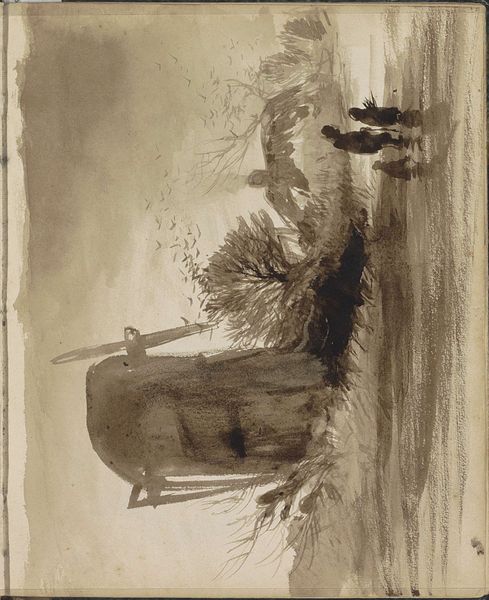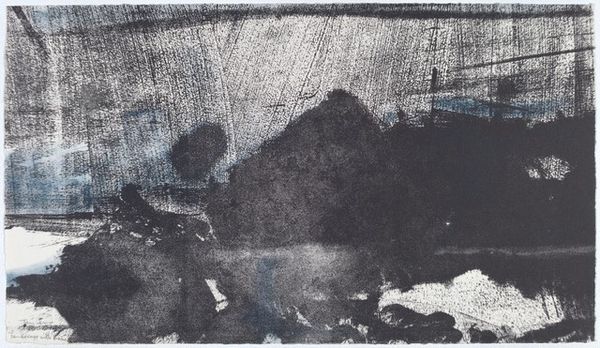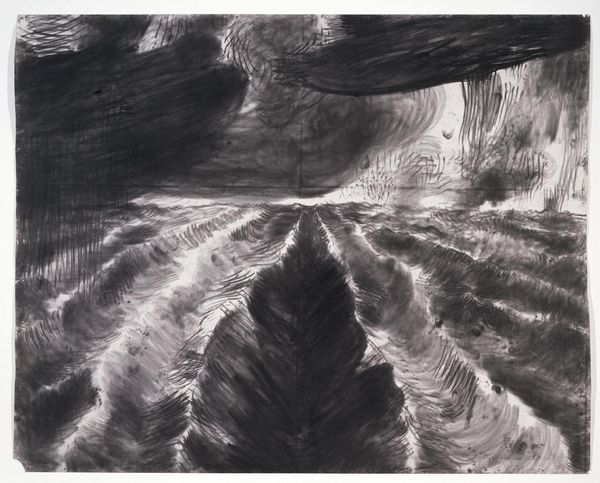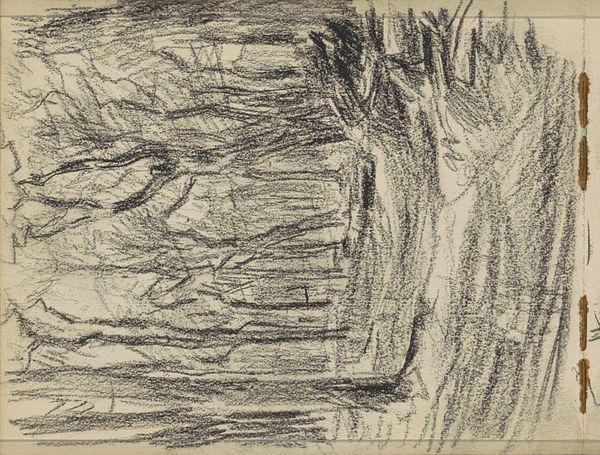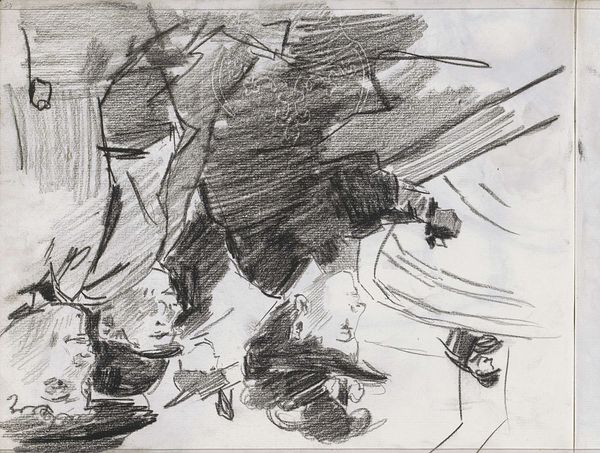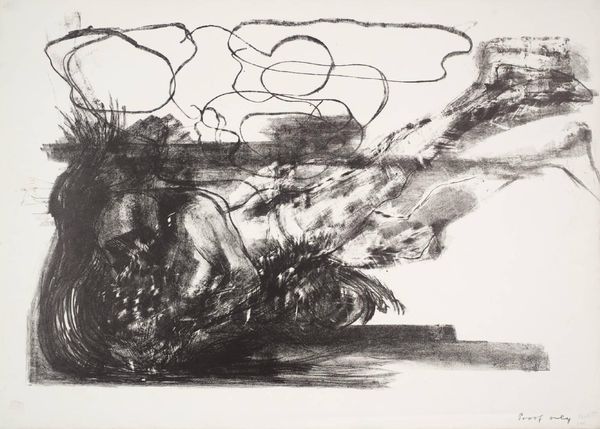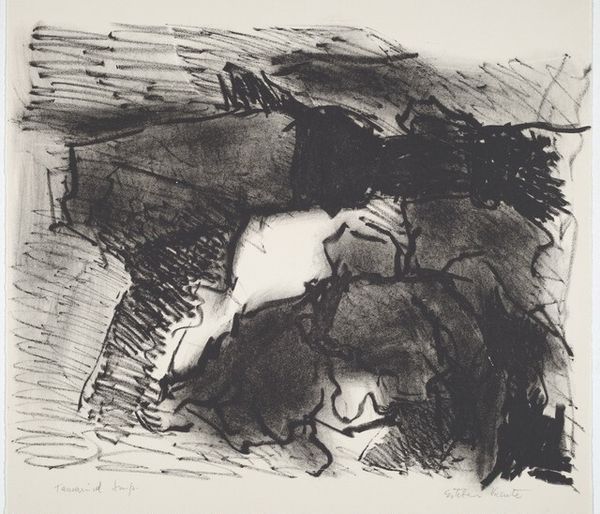
drawing, paper, watercolor, pastel, frottage
#
drawing
#
water colours
#
landscape
#
paper
#
watercolor
#
symbolism
#
pastel
#
early-renaissance
#
frottage
Copyright: Public Domain: Artvee
Curator: Welcome. We are standing before "Öinen maisema," or "Night Landscape," a work by Magnus Enckell created sometime between 1900 and 1905. Enckell was a Finnish symbolist artist, and here he employs watercolor, pastel, and frottage techniques on paper to create a uniquely atmospheric piece. Editor: Woah, right off the bat, I'm getting major Dracula vibes, you know? That heavy darkness in the foreground, those spindly trees reaching up... it's hauntingly beautiful, like a dream just before you wake up screaming. Curator: That sense of foreboding is quite characteristic of symbolism, actually. The artists weren't simply depicting reality, but rather exploring inner psychological states and anxieties through nature. Landscapes, in particular, offered a canvas for those deeper emotions. Editor: Exactly! It's like Enckell took the way my anxieties feel and splashed them onto paper. That single, almost mocking star in the corner… It's not comforting at all, it's isolating! Curator: The color palette plays a vital role as well. Note how the stark contrast between the black foreground and the washes of blues and grays in the sky create tension, furthering the symbolic intent. One can view it as representing hope amidst overwhelming darkness. Editor: I see what you mean, with the dark, heavy land contrasted with the soft, dreamlike quality of the sky above, hinting at a fragile kind of hope? It’s kind of interesting to realize, standing here, that what feels like the loneliest view somehow suggests something more universal too. What about that sort of crude looking horizontal lines? Curator: You are talking about "Frottage," which is a technique of rubbing pencil or other media over a textured surface to create an interesting visual effect. While other contemporary symbolist artists often leaned into dreamscapes featuring unreal figures and scenery, Enckell manages to convey mood and a symbolist aesthetic through natural imagery rendered in innovative textures. Editor: It gives the piece a weird urgency, almost like he scribbled down a nightmare before it could fade away. Curator: Perhaps. Regardless, Enckell has crafted a rather enduring meditation on light, darkness, and the landscapes of the human condition. Editor: Absolutely. It’s a stark reminder that sometimes, the most beautiful things come from the darkest corners of our minds.
Comments
No comments
Be the first to comment and join the conversation on the ultimate creative platform.
